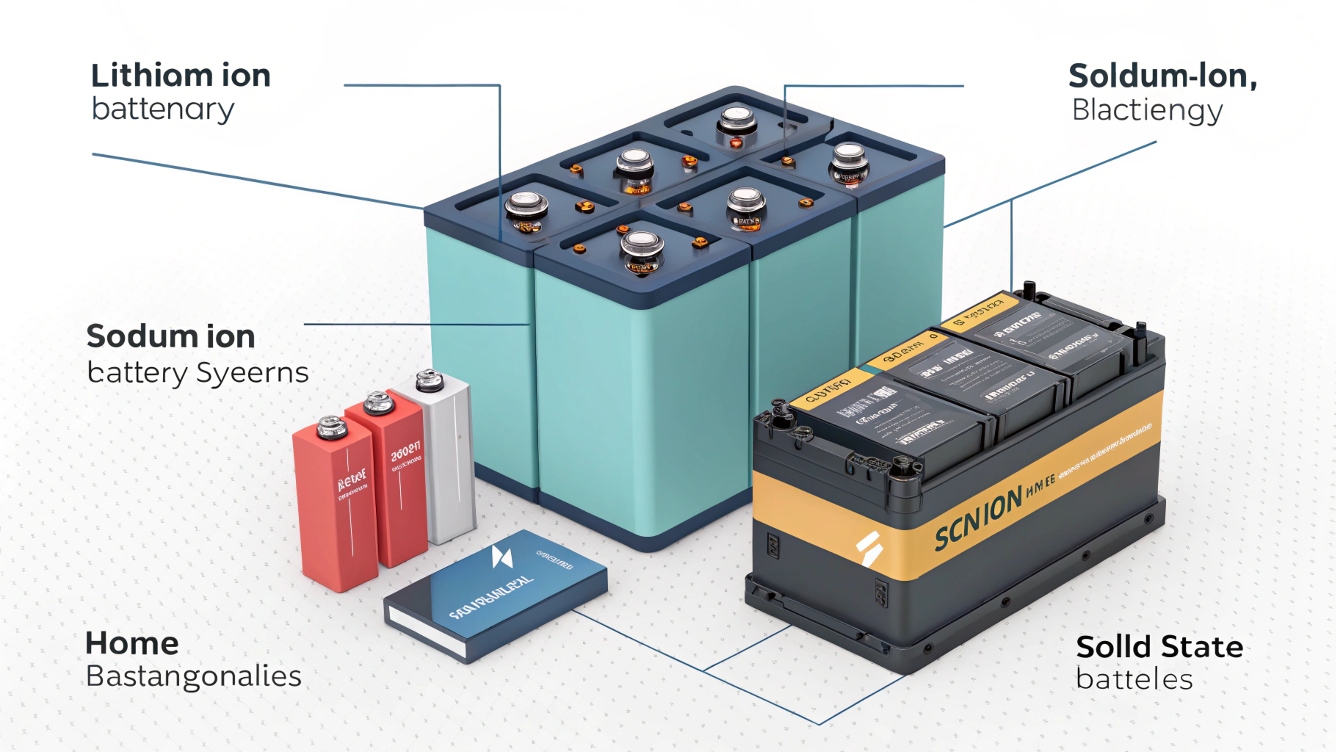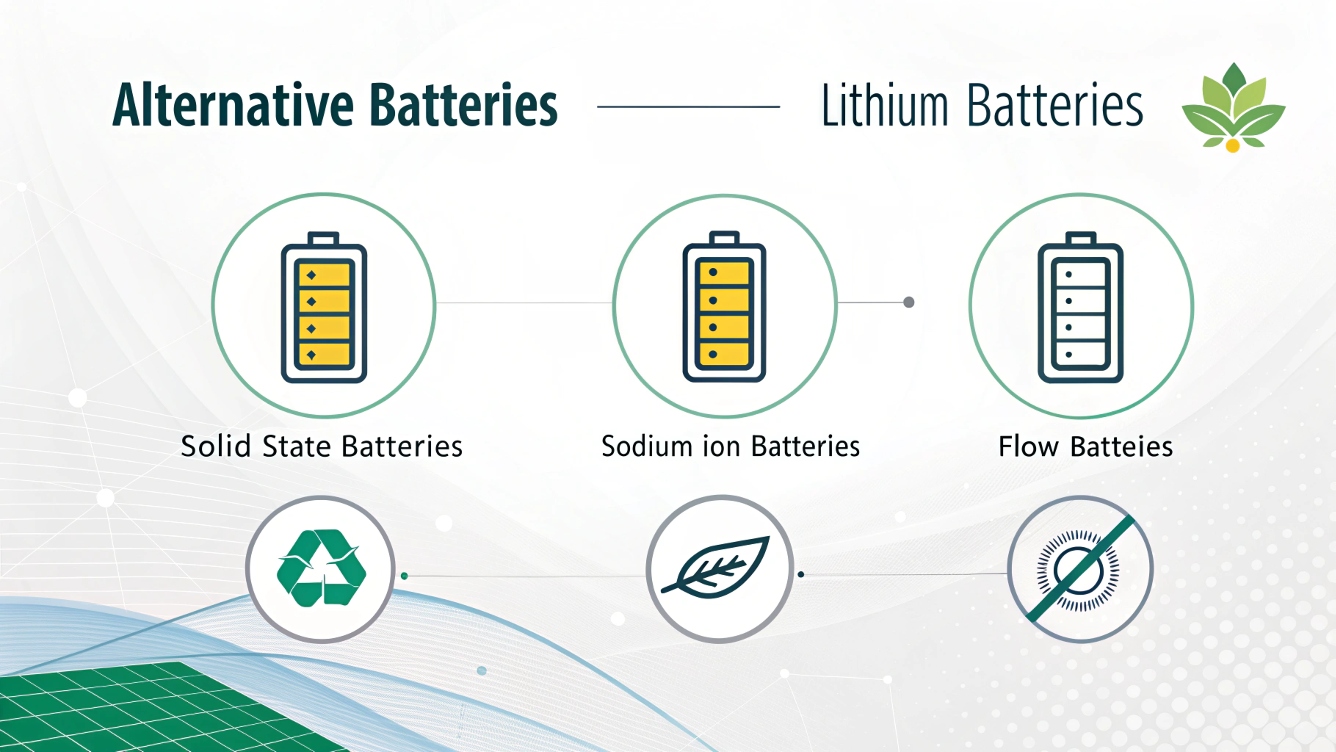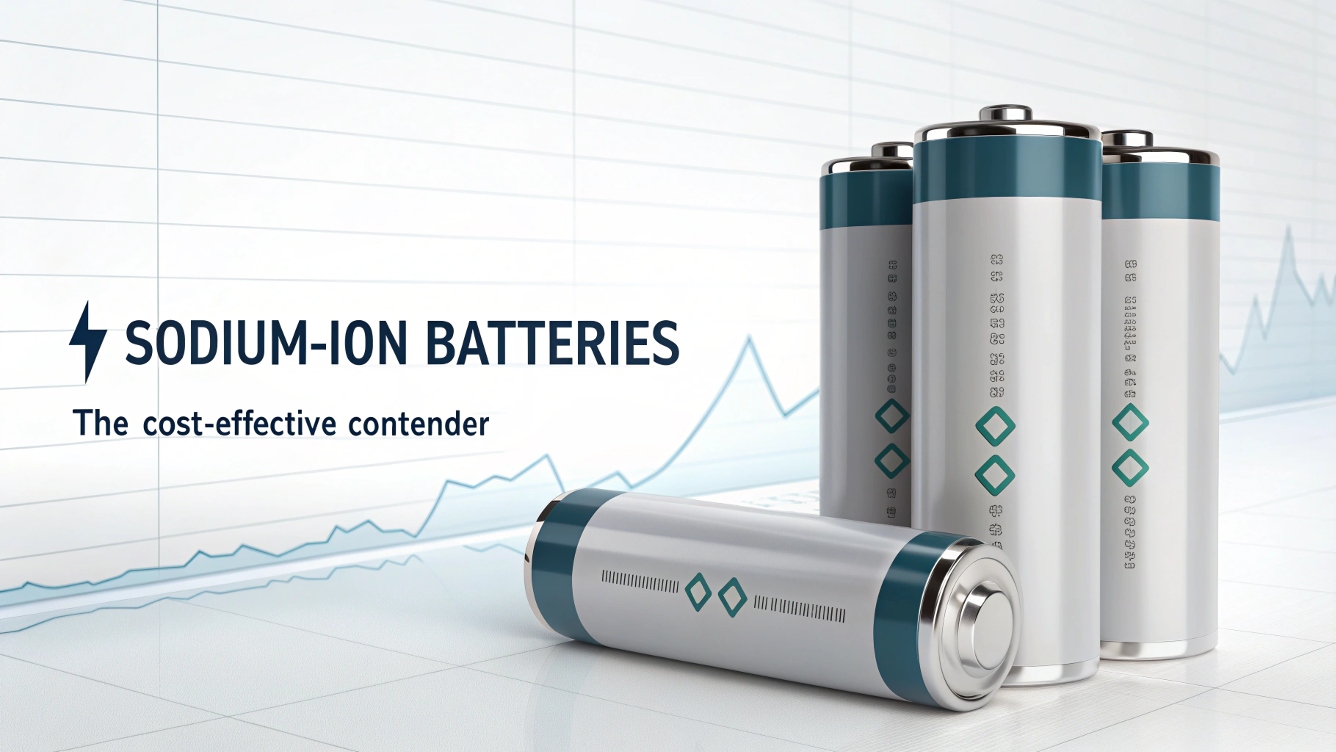Ciò che rende una batteria migliore del litio? Esplorare le alternative per un futuro sostenibile
Perché il mondo ha bisogno di alternative alle batterie agli ioni di litio
Le batterie agli ioni di litio alimentano da decenni qualsiasi cosa, dagli smartphone ai veicoli elettrici. Ma con una domanda in aumento, preoccupazioni ambientali, e i colli di bottiglia della catena di fornitura, ricercatori e produttori stanno correndo per sviluppare alternative. Immergiamoci nei più promettenti Tipi di batteria tecnologie pronte a rimodellare lo stoccaggio dell’energia.
Batterie agli ioni di sodio: Il contendente conveniente
Come funziona lo ione sodio
Le batterie agli ioni di sodio funzionano in modo simile agli ioni di litio, utilizzando ioni sodio (Na+) al posto degli ioni di litio (Li+) per immagazzinare energia. L'abbondanza di sodio... lo è 1,000 volte più comune del litio, lo rende un’alternativa economicamente vantaggiosa:citare[3]:citare[8].
Vantaggi principali:
- Costo inferiore: I sali di sodio sono più economici dei composti di litio, riducendo i costi delle materie prime fino a 30%:citare[7]:citare[10].
- Sicurezza: Meno incline alla fuga termica, rendendoli ideali per lo stoccaggio in rete e per i veicoli elettrici a bassa velocità:citare[8]:citare[9].
- Performance fredda: Funziona in modo efficiente a -20°C, a differenza delle batterie al litio che lottano con temperature gelide:citare[9].
Limitazioni:
- Densità di energia: Le attuali batterie agli ioni di sodio offrono ~160 Wh/kg, molto al di sotto di quello del litio 250+ Wh/kg:citare[7]:citare[10].
- Ciclo di vita: Tipicamente 1.500–2.000 cicli, rispetto al litio ferro fosfato (LFP) batterie’ 6,000+ cicli:citare[7].
Meglio per: Deposito stazionario, bici elettriche, e sistemi di alimentazione di backup in cui il peso non è fondamentale.
Batterie a stato solido: La rivoluzione della sicurezza
Abbattere la tecnologia a stato solido
Le batterie allo stato solido sostituiscono gli elettroliti liquidi infiammabili con materiali solidi come ceramica o polimeri. Questo design elimina i rischi di incendio e aumenta la densità energetica:citare[8].
Perché cambiano le regole del gioco:
- Sicurezza: L'assenza di elettroliti liquidi significa zero rischi di perdite o esplosioni:citare[8].
- Carica più veloce: Potenziale tariffazione per veicoli elettrici inferiore 15 minuti:citare[8].
- Longevità: Lo dimostrano i test di laboratorio 10,000+ cicli, raddoppiando gli attuali standard relativi al litio:citare[8].
Ostacoli:
- Costo: La produzione rimane costosa a causa di materiali rari come i solfuri:citare[8].
- Scalabilità: La produzione di massa è ancora in fasi pilota, con aziende come Toyota che prendono di mira 2027 per la commercializzazione:citare[8].
Meglio per: Veicoli elettrici ad alte prestazioni e aviazione in cui la sicurezza e la densità energetica non sono negoziabili.
Litio-Zolfo (Li-s) Batterie: Centrali elettriche leggere
La chimica dietro Li-S
Le batterie al litio-zolfo utilizzano catodi di zolfo, che sono più leggeri ed economici dei tradizionali catodi a base di nichel o cobalto.
Punti di forza:
- Densità di energia: Limite teorico di 2,500 Wh/kg: cinque volte la capacità degli ioni di litio:citare[3].
- Ecologico: Lo zolfo è abbondante e non tossico, riducendo l’impatto ambientale:citare[3].
Sfide:
- Durata della vita breve: Lo zolfo si dissolve durante il ciclismo, limitando la maggior parte dei prototipi a 200-300 cicli:citare[3].
- Commercializzazione lenta: I giganti della tecnologia come Oxis Energy hanno faticato a portare Li-S sul mercato:citare[3].
Meglio per: Droni, aerospaziale, e applicazioni di nicchia che privilegiano il peso rispetto alla longevità.
Batterie a flusso: La soluzione su scala di griglia
Come funzionano le batterie a flusso
Le batterie a flusso immagazzinano energia in elettroliti liquidi alloggiati in serbatoi esterni. Sono ricaricabili sostituendo il fluido elettrolitico.
Perché si distinguono:
- Scalabilità illimitata: La dimensione del serbatoio determina la capacità, perfetto per lo stoccaggio in griglia:citare[3].
- Durata della vita lunga decenni: Le batterie a flusso di vanadio durano 20+ anni con un degrado minimo:citare[3].
Svantaggi:
- Bassa densità di energia: I sistemi ingombranti non sono adatti ai dispositivi portatili:citare[3].
- Alto costo iniziale: I prezzi del vanadio possono aumentare, sebbene stiano emergendo alternative a base di ferro:citare[3].
Meglio per: Fattorie solari, stoccaggio dell’energia eolica, e strutture industriali che necessitano di backup di lunga durata.
Sistemi di batterie modulari: La flessibilità incontra l'efficienza
Una dimensione unica non è adatta a tutti i sistemi di batterie modulari consentono agli utenti di personalizzare lo stoccaggio dell’energia. Per esempio, i nostri kit di accumulo solare espandibili consentono ai proprietari di case di iniziare in piccolo e aggiungere capacità secondo necessità.
Vantaggi del design modulare:
- Scalabilità: Aggiungi moduli per soddisfare la crescente domanda di energia.
- Compatibilità ibrida: Mescola il litio, sodio, o far fluire le batterie all'interno di un sistema.
- Facilità di manutenzione: Sostituisci le singole unità senza spegnere l'intero sistema.
Per la punta: Abbina i sistemi modulari al software di gestione dell'energia basato sull'intelligenza artificiale per ottimizzare i cicli di ricarica e prolungare la durata:citare[8].
Analisi comparativa: Quale tipo di batteria si adatta alle tue esigenze?
| Tecnologia | Densità di energia (Wh/kg) | Ciclo di vita | Costo ($/kWh) | Miglior caso d'uso |
|---|---|---|---|---|
| Ioni di litio (LFP) | 150–200 | 6,000+ | 90–130 | Veicoli elettrici, Elettronica di consumo |
| Ioni di sodio | 120–160 | 1,500–2.000 | 70–100 | Stoccaggio della griglia, Bici elettriche |
| Stato solido | 300–500 (proiettato) | 10,000+ | 150–200 | Veicoli elettrici premium, Aerospaziale |
| Fluire (Vanadio) | 15–25 | 20,000+ | 300–500 | Storage su scala industriale |
Dati sintetizzati da rapporti di settore e studi accademici:citare[3]:citare[8]:citare[10].
Il futuro dello stoccaggio energetico: Soluzioni ibride
Nessun tipo di batteria spodesterà il litio. Invece, Domineranno i sistemi ibridi che combinano l’elevata densità energetica del litio con l’accessibilità economica del sodio o la longevità del flusso. Ad esempio, soluzioni di accumulo solare come il nostro Pacco batteria domestico ibrido integra batterie al litio e a flusso per bilanciare l'uso quotidiano e il backup a lungo termine.
Tendenze emergenti da tenere d’occhio:
- Ricarica ottimizzata dall'intelligenza artificiale: Gli algoritmi prevedono modelli di utilizzo per ridurre l’usura:citare[8].
- Innovazioni nel riciclaggio: Nuovi metodi recuperano 95%+ litio da vecchie batterie:citare[10].
- Cambiamenti politici: I governi sovvenzionano gli ioni di sodio per progetti rinnovabili:citare[9].
Conclusione: Scegliere il giusto Tipi di batteria per le esigenze di domani

Mentre il litio resta per ora il re, alternative come le batterie agli ioni di sodio e allo stato solido stanno ritagliando nicchie in termini di sostenibilità e sicurezza. Per proprietari di case e aziende, sistemi di batterie modulari offrire la flessibilità necessaria per adottare nuove tecnologie man mano che maturano.
Gycxsolar fornisce prodotti a batteria al litio di alta qualità e tutti i componenti dei sistemi di energia solare ai clienti in tutto il mondo.
Vengono prodotti prodotti di alta qualità come pannelli solari e inverter. Ti consigliamo anche soluzioni di combinazione di sistemi più favorevoli a te.
Allo stesso tempo, Abbiamo esperti che forniscono servizi di soluzioni di progettazione gratuite.
Un servizio di stop per risolvere i tuoi problemi, Il servizio di alta qualità mette gycxsolar in una posizione di leader nel settore.
La tua consultazione è molto gradita. Lo schema di progettazione è sempre stato altamente elogiato e fidato, con una base di clienti molto stabile. Sceglierci è una scelta molto saggia per te.
Passi successivi:
- Calcola il tuo fabbisogno energetico con lo strumento.
- Esplorare il nostro Soluzioni per lo stoccaggio delle batterie su misura per uso residenziale e commerciale.
- Iscriviti al nostro Canale YouTube per guide di installazione fai-da-te e aggiornamenti tecnici.
Riferimenti
- Chimica delle batterie agli ioni di sodio: Wikipedia: Batteria agli ioni di sodio.
- Dati sulla sicurezza dello stato solido: Wikipedia: Batteria allo stato solido.
- Progressi nel litio-zolfo: Studi peer-reviewed in Energia della natura.




